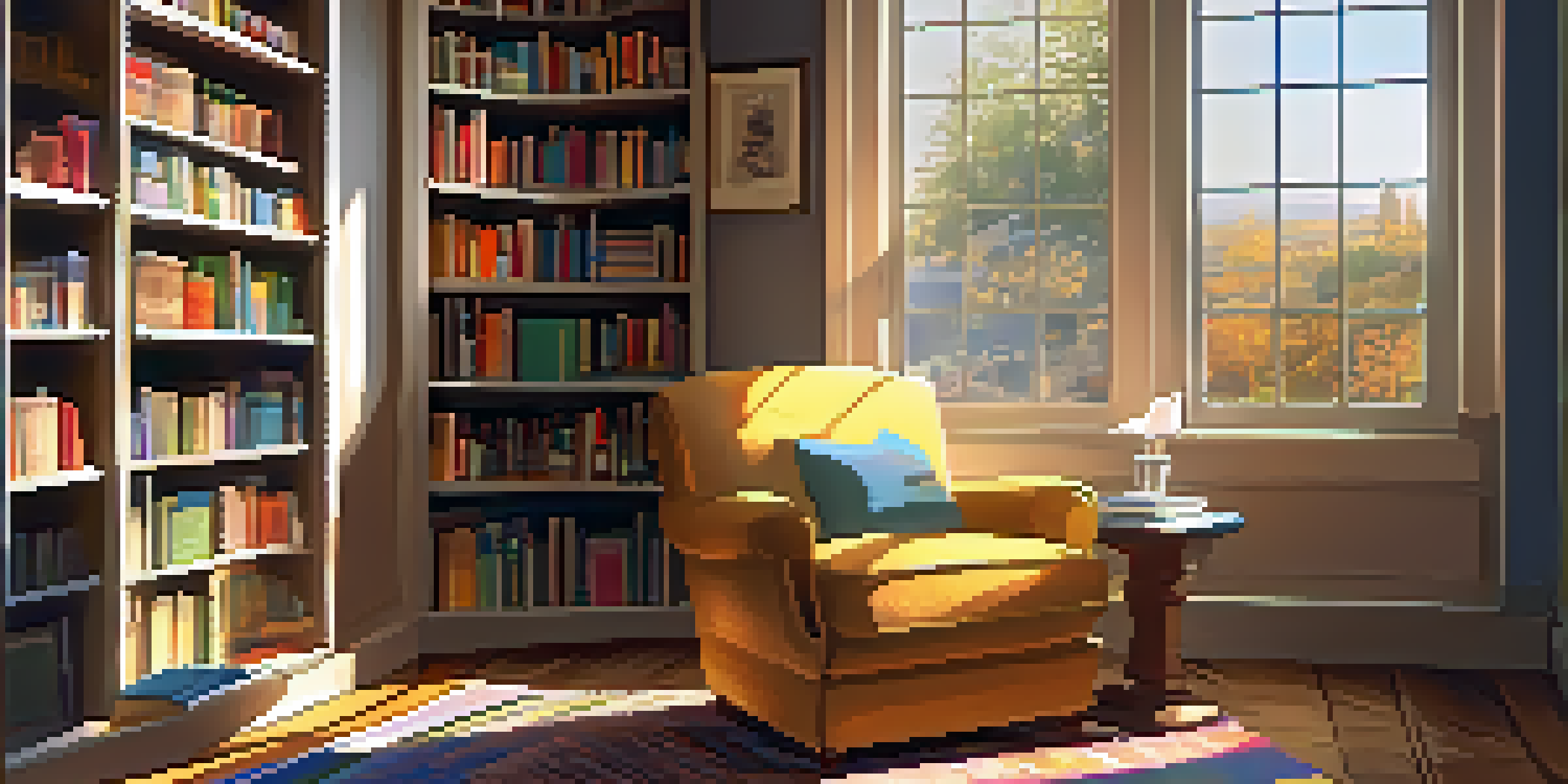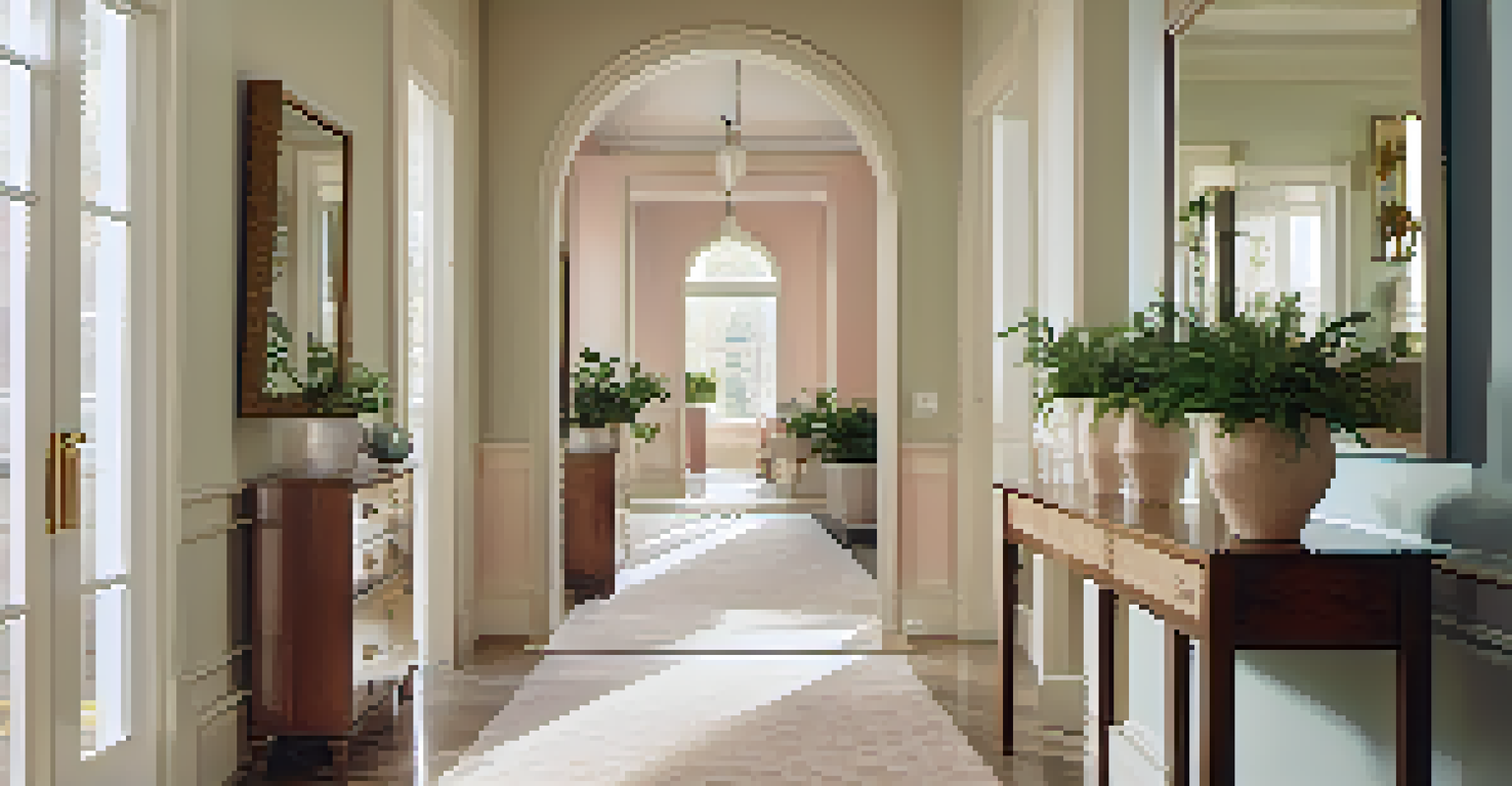Utilizing Space Creatively: Staging Tips for Unique Layouts

Understanding the Importance of Space Utilization
Utilizing space creatively is essential for making your environment functional and aesthetically pleasing. When every inch counts, especially in smaller areas, thoughtful staging allows you to highlight the room's best features. A well-structured layout not only enhances the visual appeal but also improves the overall flow and functionality of the space.
Space is a canvas for the imagination to play on.
Consider the purpose of each room and how you want it to feel. For instance, a cozy reading nook can be created in an unused corner with the right furniture and decor. By understanding the importance of space utilization, you can transform any area into a welcoming sanctuary.
Moreover, effective space utilization allows you to adapt your layout to different needs over time. Whether it's hosting guests or simply relaxing with family, a flexible design can cater to various activities, ensuring your space remains relevant and enjoyable.
Embracing Multi-Functional Furniture
One of the best ways to maximize space is by incorporating multi-functional furniture. Pieces like a sofa bed or an ottoman with storage can serve multiple purposes, helping to reduce clutter and maintain a clean aesthetic. This approach not only saves space but also adds versatility to your layout.

Imagine a small apartment where a pull-out dining table can double as a workspace during the day. This kind of furniture allows you to seamlessly transition from one activity to another without sacrificing comfort or style. It’s a practical solution that embraces the concept of living smartly in smaller spaces.
Maximize Space with Multi-Functional Furniture
Incorporating pieces like sofa beds and storage ottomans can help reduce clutter while providing versatile solutions for smaller areas.
Additionally, when selecting multi-functional furniture, consider the design and style. Choose pieces that complement your existing decor while providing utility. This way, you’re not just saving space; you’re also enhancing the overall look of your home.
Maximizing Vertical Space with Creative Solutions
When floor space is limited, look up! Maximizing vertical space is an effective way to create the illusion of a larger area. Shelving units, hanging plants, and wall art can help draw the eye upward, making a room feel more expansive and inviting.
The best rooms have something to say about the people who live in them.
For example, installing floating shelves allows you to display books and decor without taking up valuable floor space. This not only adds character to your room but also keeps items organized and easily accessible. Utilizing vertical space can transform bare walls into vibrant focal points.
Moreover, consider incorporating tall furniture pieces, such as bookcases or armoires, which can provide ample storage without overwhelming the space. By strategically placing these items, you can create a balanced look that feels open and airy.
Creating Zones for Different Activities
Creating distinct zones within an open layout can enhance both functionality and flow. By establishing areas for specific activities, such as work, relaxation, or dining, you can make the most of your space while ensuring each section serves its purpose. This technique is especially useful in studios or multifunctional rooms.
For instance, using rugs to delineate different areas helps to visually separate spaces while adding warmth and texture. A cozy rug under a coffee table can define a living room area, while another in the dining space can create an inviting atmosphere. This simple change can significantly impact how your space feels and functions.
Create Zones for Enhanced Functionality
Establishing distinct areas for specific activities within an open layout improves organization and flow, making your space more enjoyable.
Additionally, consider using furniture arrangements to create these zones. For example, placing a sofa back-to-back with a workspace can provide separation while maintaining an open feel. This approach fosters a sense of organization and encourages productivity within your home.
Incorporating Mirrors for Depth and Light
Mirrors are a fantastic tool for enhancing the perception of space. By reflecting light and visuals, mirrors can make a room feel larger and more open. Strategically placing a large mirror across from a window can amplify natural light, creating a bright, airy atmosphere.
Imagine walking into a small hallway that feels cramped. Adding a mirror at the end can visually extend the space, making it feel less confined. This simple trick is often overlooked but can dramatically alter the ambiance of your home.
Additionally, mirrors come in various styles and designs, allowing you to choose one that fits your decor. Whether it's a sleek modern piece or a vintage-inspired design, mirrors not only serve a functional purpose but also act as stylish decor elements that enhance your overall aesthetic.
Choosing the Right Color Palette for Your Space
The colors you choose for your space can significantly impact its overall feel and perception. Lighter shades, like soft whites and pastels, can open up a room, creating a sense of spaciousness. Conversely, darker colors can be cozy but might make a small area feel even tighter.
For instance, painting the walls a light neutral color while adding colorful accents through decor can create an inviting atmosphere without overwhelming the space. You can still inject personality and warmth into your home by incorporating vibrant accessories, such as cushions or artwork.
Use Color and Decor to Personalize Spaces
Choosing the right color palette and adding meaningful decor can transform a room into a welcoming environment that reflects your unique identity.
Moreover, consider the color scheme in relation to the natural light your space receives. Rooms with plenty of sunlight can handle bolder colors, while those with less light might benefit from softer hues. By choosing the right palette, you can create a harmonious environment that feels both spacious and welcoming.
Personalizing Your Space with Meaningful Decor
Lastly, personalizing your space with meaningful decor can turn a generic layout into a home filled with character. Family photos, travel souvenirs, or handmade crafts add personal touches that resonate with your experiences and memories. This not only makes your space more inviting but also reflects your unique identity.
Consider using a gallery wall to showcase your favorite memories or incorporating pieces that tell a story. For example, a collection of vintage postcards framed together creates a stunning focal point while sparking conversations. Personal decor also helps create a sense of belonging within your space.

However, be mindful of clutter when adding decor. Select a few statement pieces rather than overcrowding surfaces. This approach allows your decor to shine while maintaining a clean and organized appearance.